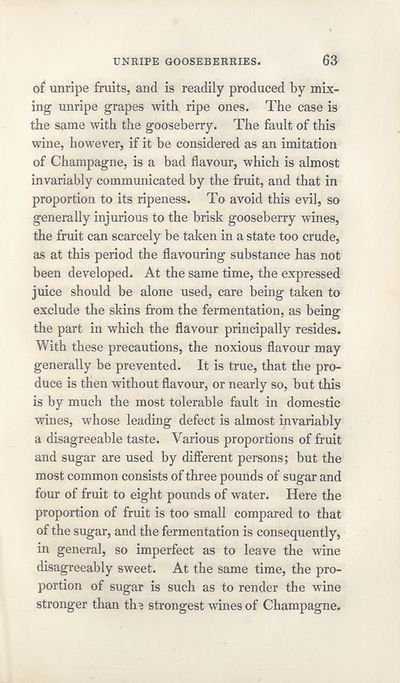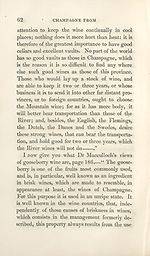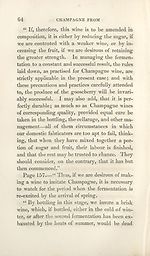Download files
Complete book:
Individual page:
Thumbnail gallery: Grid view | List view

UNRIPE GOOSEBERRIES.
63
of unripe fruits, and is readily produced by mix¬
ing unripe grapes with ripe ones. The case is
the same with the gooseberry. The fault of this
wine, however, if it be considered as an imitation
of Champagne, is a bad flavour, which is almost
invariably communicated by the fruit, and that in
proportion to its ripeness. To avoid this evil, so
generally injurious to the brisk gooseberry wines,
the fruit can scarcely be taken in a state too crude,
as at this period the flavouring substance has not
been developed. At the same time, the expressed
juice should be alone used, care being taken to
exclude the skins from the fermentation, as being
the part in which the flavour principally resides.
With these precautions, the noxious flavour may
generally be prevented. It is true, that the pro¬
duce is then without flavour, or nearly so, but this
is by much the most tolerable fault in domestic
wines, whose leading defect is almost invariably
a disagreeable taste. Various proportions of fruit
and sugar are used by different persons; but the
most common consists of three pounds of sugar and
four of fruit to eight pounds of water. Here the
proportion of fruit is too small compared to that
of the sugar, and the fermentation is consequently,
in general, so imperfect as to leave the wine
disagreeably sweet. At the same time, the pro¬
portion of sugar is such as to render the wine
stronger than tin strongest wines of Champagne.
63
of unripe fruits, and is readily produced by mix¬
ing unripe grapes with ripe ones. The case is
the same with the gooseberry. The fault of this
wine, however, if it be considered as an imitation
of Champagne, is a bad flavour, which is almost
invariably communicated by the fruit, and that in
proportion to its ripeness. To avoid this evil, so
generally injurious to the brisk gooseberry wines,
the fruit can scarcely be taken in a state too crude,
as at this period the flavouring substance has not
been developed. At the same time, the expressed
juice should be alone used, care being taken to
exclude the skins from the fermentation, as being
the part in which the flavour principally resides.
With these precautions, the noxious flavour may
generally be prevented. It is true, that the pro¬
duce is then without flavour, or nearly so, but this
is by much the most tolerable fault in domestic
wines, whose leading defect is almost invariably
a disagreeable taste. Various proportions of fruit
and sugar are used by different persons; but the
most common consists of three pounds of sugar and
four of fruit to eight pounds of water. Here the
proportion of fruit is too small compared to that
of the sugar, and the fermentation is consequently,
in general, so imperfect as to leave the wine
disagreeably sweet. At the same time, the pro¬
portion of sugar is such as to render the wine
stronger than tin strongest wines of Champagne.
Set display mode to:
![]() Universal Viewer |
Universal Viewer | ![]() Mirador |
Large image | Transcription
Mirador |
Large image | Transcription
| Antiquarian books of Scotland > Occupations > British wine-maker, and domestic brewer > (101) |
|---|
| Permanent URL | https://digital.nls.uk/126001133 |
|---|
| Description | Thousands of printed books from the Antiquarian Books of Scotland collection which dates from 1641 to the 1980s. The collection consists of 14,800 books which were published in Scotland or have a Scottish connection, e.g. through the author, printer or owner. Subjects covered include sport, education, diseases, adventure, occupations, Jacobites, politics and religion. Among the 29 languages represented are English, Gaelic, Italian, French, Russian and Swedish. |
|---|

